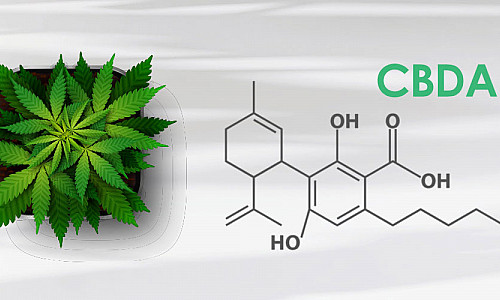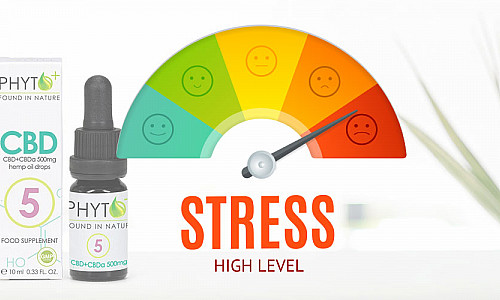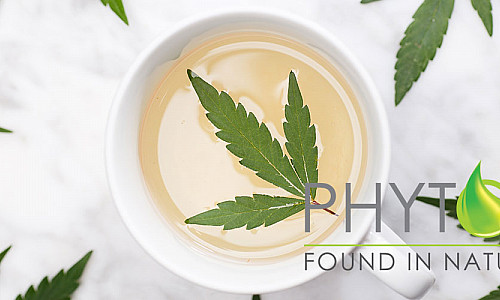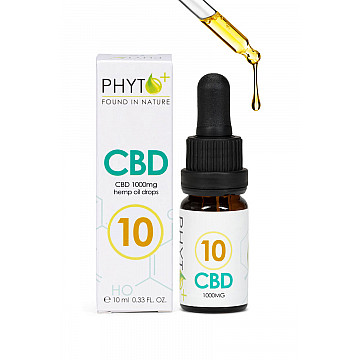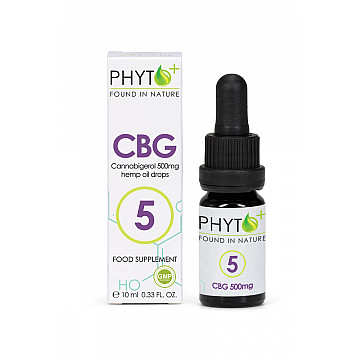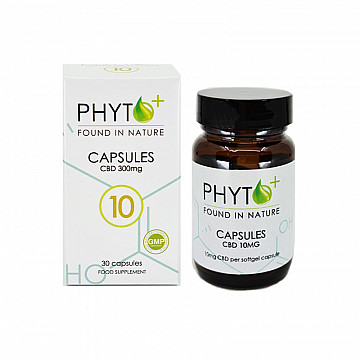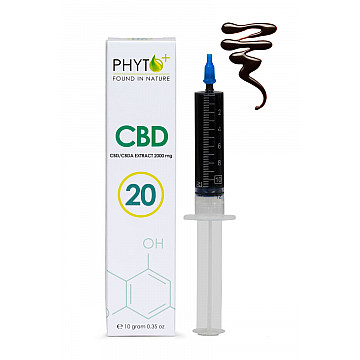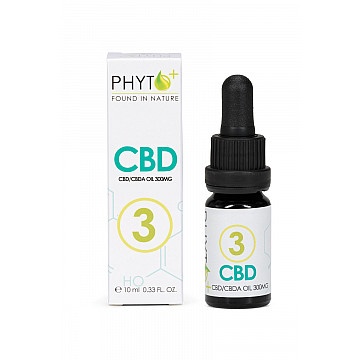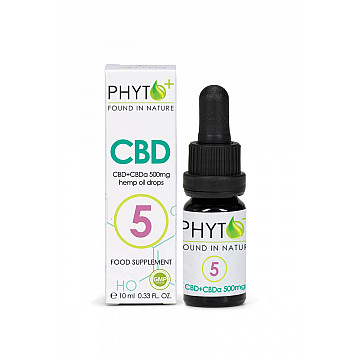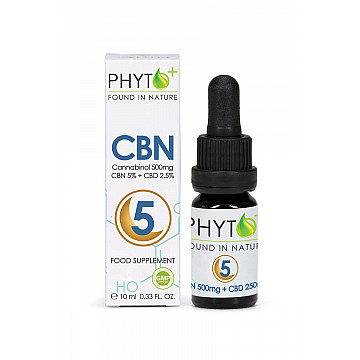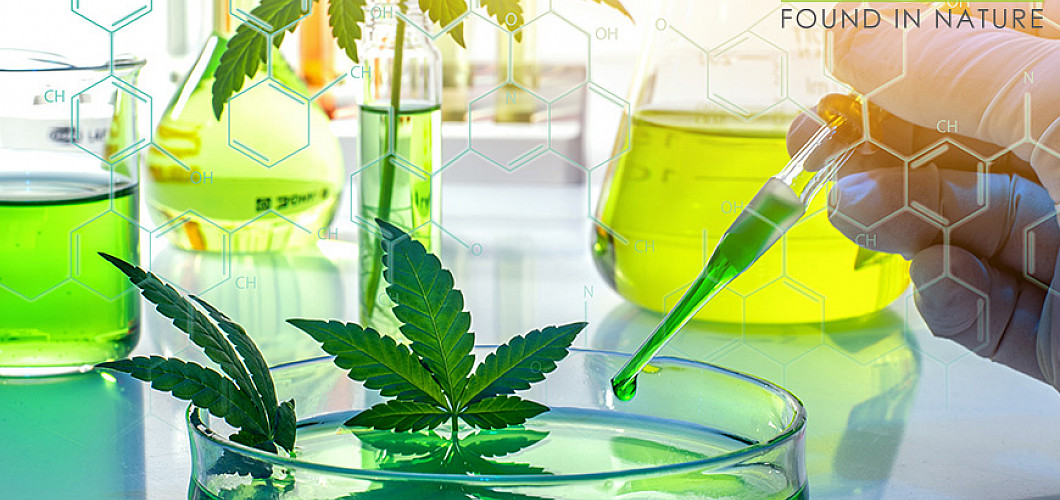
What are cannabinoids and why are they important?
Cannabinoids are chemical compounds that naturally occur in the cannabis plant. Over 100 different cannabinoids have been identified, of which the two most well-known are THC (tetrahydrocannabinol) and CBD (cannabidiol).
Cannabinoids work by binding to the cannabinoid receptors in the body, which are part of the endocannabinoid system. This system is involved in various physiological processes such as pain regulation, inflammation, mood, appetite, and sleep.
Different cannabinoids have different effects on the body. THC is known for its psychoactive effects, while CBD is non-psychoactive and often used for its therapeutic properties. Other cannabinoids such as CBG, CBN, and CBC also have different properties and potential therapeutic benefits.
There is still much to be discovered about the different cannabinoids and their effects on the body. Scientific research into these compounds and their applications is still ongoing.
In this blog, we will discuss the most important and well-known cannabinoids and their therapeutic effects. However, before we talk about cannabinoids, we would like to explain that there is a difference between the plants in which the two main cannabinoids, THC and CBD, are found, namely the marijuana plant and the hemp plant.
What is the difference between a marijuana (weed) plant and a hemp plant?
Marijuana (weed) and hemp are both cannabis plants and belong to the Cannabaceae family, but there are important differences between the two.
Botanical characteristics:
Marijuana is generally a shorter, bushier plant with broad leaves and is mainly intended for recreational purposes due to its high concentration of THC. Hemp is usually a tall, slender plant with narrow leaves and is grown for industrial applications due to its high fiber concentration and low THC concentration.
THC content:
Marijuana usually has a higher THC content (tetrahydrocannabinol), which is the psychoactive substance responsible for the "high" feeling associated with marijuana (weed). Hemp, on the other hand, usually has a much lower THC content and often contains less than 0.3% THC.
CBD content:
Hemp generally contains higher levels of CBD (cannabidiol), while Marijuana can contain both high and low levels of CBD.
Legal status:
Hemp is legal to grow in many countries, including the United States, as long as the THC content is not higher than 0.3%. Growing Marijuana (weed) is illegal in most countries, although there are increasingly more countries legalizing Marijuana for recreational or medicinal use.
Use:
Marijuana is mainly used for recreational purposes, while hemp is used for a wide range of applications, including textiles, paper, food, cosmetics, and CBD oil supplements.
In summary, the main difference between the two plants is their THC content and their respective uses. Marijuana has higher THC levels and is mainly used for recreational purposes, while hemp has low THC levels and is used for industrial applications and products with high CBD levels.
How to use marijuana (weed)?
To consume Marijuana, also known as weed, the dried flower buds of the cannabis plant are used. It contains various chemical compounds, including cannabinoids such as THC (tetrahydrocannabinol) and CBD (cannabidiol), which can have psychoactive and/or therapeutic effects on the human body.
The flower buds of Marijuana are typically smoked but can also be consumed in food such as baked goods (space cake), candies, and drinks (edibles). It can also be used in the form of oils, tinctures, creams, and other products.
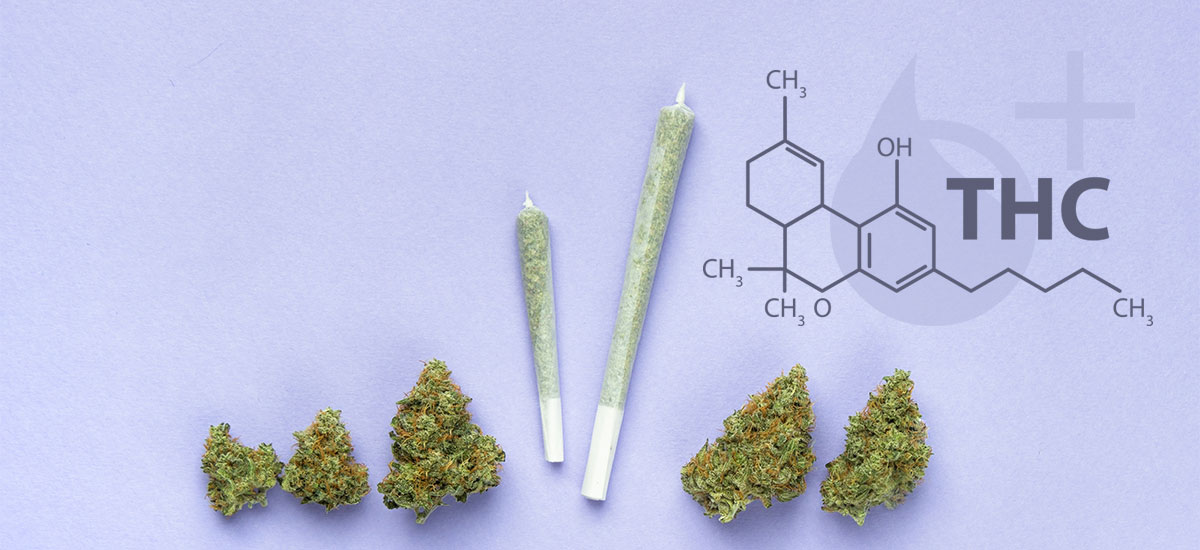
Due to the psychoactive effects of THC, Marijuana is usually used recreationally to experience an altered state of mind and a feeling of euphoria. Additionally, it can also be used therapeutically, such as for pain relief, inflammation reduction, anxiety and stress reduction, and reducing nausea and vomiting.
How is hemp used?
Hemp is a fast-growing plant that naturally occurs in warm and humid climates and is cultivated for its fibers, seeds, and oils. Hemp fibers have been used for thousands of years for textile production, ropes, paper, and other applications.
The hemp plant also contains various cannabinoids such as CBD (cannabidiol), CBG (cannabigerol), and CBN (Cannabinol). Unlike marijuana, hemp is a variety of the cannabis plant that naturally contains low levels of THC. According to the law in most countries, hemp can be grown and used for industrial purposes as long as the THC content is not higher than 0.2% in Europe) and 0.3% in the USA.
Hemp is currently used for various applications, including textiles, paper, building materials, bioplastics, biofuels, and food supplements. Hemp oil, known as CBD extract, is used for therapeutic purposes due to the presence of CBD and other cannabinoids that may have therapeutic effects.
When were cannabinoids discovered?
Cannabinoids were discovered by scientists researching the cannabis plant. The use of cannabis as medicine and a recreational drug dates back thousands of years, but it wasn't until the 1960s and 1970s that scientists began to understand how the chemical compounds in the plant work.
In 1964, Israeli chemist Raphael Mechoulam identified THC (tetrahydrocannabinol) as the primary psychoactive compound in cannabis. This opened the door to further research into the plant's chemical composition and its effects on the body.
In the years that followed, other cannabinoids, such as CBD (cannabidiol) and CBG (cannabigerol), were discovered, and their effects on the body were studied. Scientists discovered that these compounds bind to the cannabinoid receptors in the body, which are part of the endocannabinoid system.
Today, there is still much research needed to understand the many different cannabinoids found in the cannabis plant and further investigate their potential uses as medicine.
Professor Raphael Mechoulam
Professor Raphael Mechoulam was an Israeli chemist and professor of medicinal chemistry at the Hebrew University of Jerusalem. He is particularly known as the scientist who first identified THC (tetrahydrocannabinol) as the main psychoactive compound in cannabis in 1964. This laid the foundation for research into the chemical composition of cannabis and its effects on the human body.
Mechoulam has also contributed to the discovery and isolation of other cannabinoids, including
cannabidiol (CBD) and cannabigerol (CBG). He has played an important role in researching the endocannabinoid system, the body's natural cannabinoid system, and the interaction between cannabinoids and the receptors in the system.
Mechoulam has published numerous scientific articles and has received several awards for his contributions to cannabis and cannabinoid research. His work has paved the way for research into the therapeutic properties of cannabis and cannabinoids and has contributed to the growing acceptance of cannabis as medicine.
On March 9, 2023, Professor Raphael Mechoulam passed away at the age of 92.
What are the effects of cannabinoids?
Cannabinoids can have a variety of effects on the human body and mind. The two main cannabinoids are delta-9-tetrahydrocannabinol (THC) and cannabidiol (CBD).
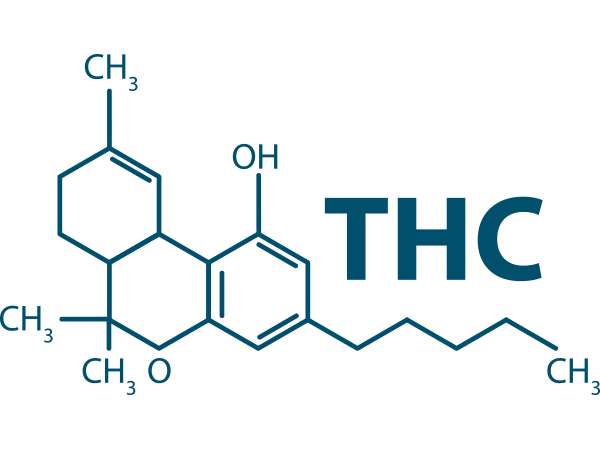
What is the effect of THC?
THC (Delta-9-tetrahydrocannabinol) is the main psychoactive compound in cannabis and has several therapeutic effects on the human body due to its interaction with the endocannabinoid system (ECS). THC binds to the cannabinoid receptors in the ECS, which are primarily found in the brain, immune system, and peripheral nervous system.
Some of the possible therapeutic effects of THC are:
- Pain relief: THC has analgesic properties and may be used in the treatment of pain caused by conditions such as multiple sclerosis, neuropathy, and cancer.
- Relief of nausea and vomiting: THC can increase appetite and reduce nausea and vomiting in people undergoing chemotherapy or suffering from conditions such as HIV/AIDS.
- Reduction of inflammation: THC has anti-inflammatory properties and may be used in the treatment of inflammatory-related conditions such as arthritis, ulcerative colitis, and Crohn's disease.
- Reduction of anxiety: THC may reduce the effects of anxiety, but can also cause anxiety and paranoia at higher doses or in sensitive individuals.
- Relief of sleep problems: THC may help improve sleep quality and reduce sleep problems such as insomnia.
It is important to note that the effects of THC can be psychoactive, meaning it can cause feelings of euphoria, changes in perception, and cognitive changes. This can cause unwanted side effects in some people, especially at higher doses. Therefore, it is important to monitor and regulate the dosage and mode of administration to maximize the potential benefits and minimize the potential risks.
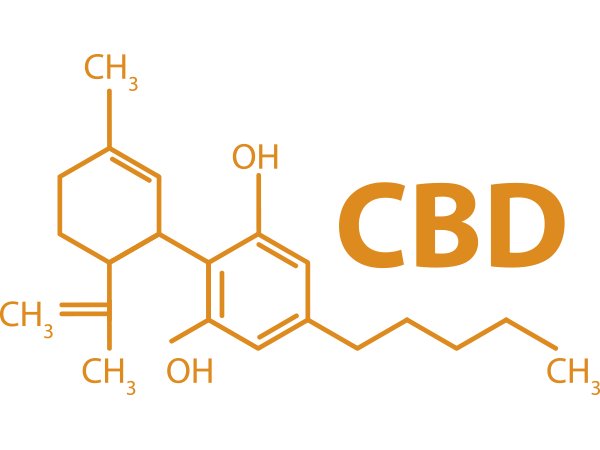
What is the effect of CBD?
CBD (cannabidiol) has various effects on the human body due to its interaction with the endocannabinoid system (ECS). The ECS plays a crucial role in regulating different bodily functions, such as pain, mood, appetite, sleep, and immune response.
Some of the possible therapeutic effects of CBD are:
- Pain relief: CBD can reduce pain through its anti-inflammatory and analgesic properties. This makes it potentially useful in treating conditions such as arthritis and multiple sclerosis.
- Reduction of anxiety and depression: CBD can improve mood by regulating serotonin signaling in the brain. This may potentially reduce the effects of anxiety and depression.
- Reduction of epileptic seizures: CBD may help reduce epileptic seizures in some people with epilepsy. It has been approved by the FDA as a treatment for certain forms of epilepsy.
- Possible Anti-tumor effects: There is some evidence that CBD may have anti-tumor effects and could potentially be used as part of the treatment for certain types of cancer.
- Neuroprotection: CBD may potentially help protect neurons in the brain from damage, which could lead to improved brain function and reduced risk of neurological disorders.
It is important to note, however, that the effects of CBD are still subject to research, and more studies are needed to better understand the potential therapeutic applications of this substance. It is also important to mention that CBD is not psychoactive, meaning it does not cause a "high" like THC can.
What other cannabinoids are there?
There are more than a hundred different cannabinoids identified in the cannabis plant. In addition to THC and CBD, the most common ones are:
- Cannabigerol (CBG)
- Cannabinol (CBN)
- Cannabichromene (CBC)
- Cannabigerolic Acid (CBDa)
- Cannabidivarin (CBDV)
There are also other lesser-known cannabinoids such as Cannabicyclol (CBL), Cannabitriol (CBT), and Tetrahydrocannabinolic acid (THCA), to name a few. Although many of these cannabinoids are less well-known and less studied, some of them show potential for therapeutic use and may be implemented in medicines or treatments in the future.
Did you know that full-spectrum CBD oil contains all cannabinoids except for THC?
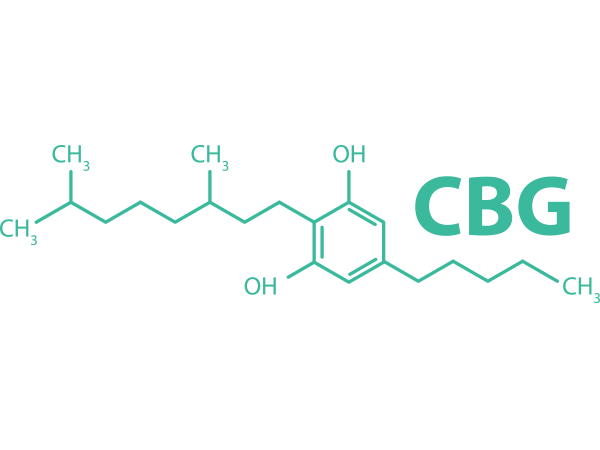
What is the effect of CBG?
Cannabigerol (CBG) is a non-psychoactive cannabinoid that occurs in small amounts in the cannabis plant. There hasn't been much research on the therapeutic effects of CBG in humans, but there are some promising results from animal studies and in vitro research.
Some of the possible therapeutic effects of CBG are:
- Anti-inflammatory properties: CBG may have anti-inflammatory properties and may be potentially used in the treatment of conditions such as ulcerative colitis and Crohn's disease.
- Pain relief: CBG may potentially help reduce pain because it interacts with the ECS that is involved in pain modulation.
- Antidepressant: CBG may potentially help reduce symptoms of depression and anxiety.
- Neuroprotective: CBG may potentially have neuroprotective properties, meaning that it can support brain health and possibly help in the treatment of conditions such as Parkinson's disease and multiple sclerosis.
- Possible anti-cancer properties: There are some in vitro studies suggesting that CBG may have anti-cancer properties and can be used in the treatment of cancer.
Although more research is needed to understand and confirm the therapeutic effects of CBG, current findings indicate that it has the potential to play an important role in the treatment of various conditions and symptoms.
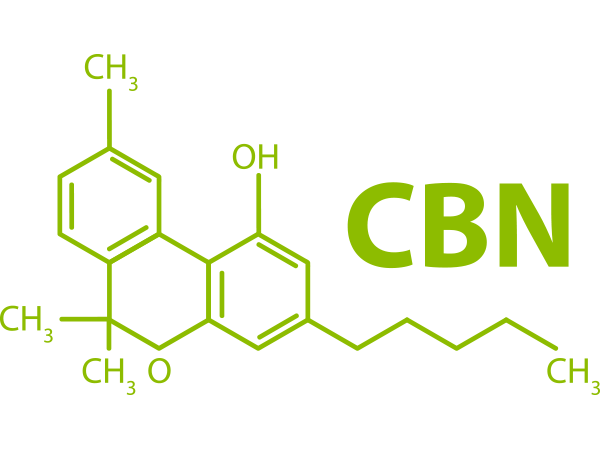
What is the effect of CBN?
Cannabinol (CBN) is a cannabinoid that is formed when THC breaks down due to exposure to oxygen and light. CBN is often associated with sleepiness and is therefore sometimes used as a natural sleep aid. Although there is not much research on the therapeutic effects of CBN, there are some possible benefits of CBN that have been observed in studies and anecdotal evidence:
- Sleep-promoting: CBN can help promote sleep by causing drowsiness and extending the duration of sleep.
- Pain relief: CBN may possibly act as a pain reliever because it interacts with the endocannabinoid system, which is involved in pain regulation.
- Anti-inflammatory: CBN may have anti-inflammatory properties and may be used in the treatment of conditions such as arthritis.
- Anticonvulsant: CBN may help reduce epileptic seizures, as shown in some animal studies.
- Bone tissue growth: CBN may promote bone tissue growth and be used in the treatment of conditions such as osteoporosis.
It is important to note that more research is needed to better understand and confirm the therapeutic effects of CBN. Although it is generally considered safe, side effects may occur, such as fatigue, dizziness, and nausea.
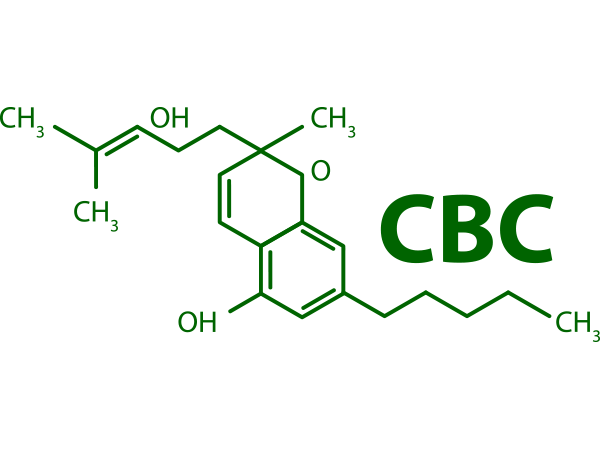
What is the effect of CBC?
Cannabichromene (CBC) is a cannabinoid that occurs in small amounts in the cannabis plant. There has been little research into the therapeutic effects of CBC in humans, but there are some promising results from animal studies and in vitro research.
Some of the possible therapeutic effects of CBC include:
- Anti-inflammatory properties: CBC may have anti-inflammatory properties and may be used in the treatment of conditions such as arthritis and ulcerative colitis.
- Analgesic: CBC may act as a painkiller, as it interacts with the endocannabinoid system, which is involved in pain regulation.
- Antidepressant: CBC may help reduce symptoms of depression and anxiety.
- Neuroprotective: CBC may have neuroprotective properties, meaning it can support brain health and may be used in the treatment of conditions such as Parkinson's disease and multiple sclerosis.
- Possible anti-cancer properties: Some in vitro studies suggest that CBC may have anti-cancer properties and may be used in the treatment of cancer.
Although more research is needed to understand and confirm the therapeutic effects of CBC, current findings indicate that it has the potential to play an important role in the treatment of various conditions and symptoms.
What is the effect of CBDa?
Cannabidiolic acid (CBDa) is a cannabinoid that naturally occurs in the hemp plant. CBDa is the precursor to cannabidiol (CBD), meaning it is converted to CBD when the hemp plant is heated (e.g. by sunlight or in the decarboxylation process).
There has been some research on the effects of CBDa, and it is suggested that it may have some therapeutic properties. For example, CBDa is being studied for its potential anti-inflammatory, anti-emetic (anti-nausea and vomiting), and analgesic properties.
Several studies have shown that CBDa has anti-inflammatory properties, which may make it useful for the treatment of inflammation-related conditions, such as arthritis. Additionally, there is research suggesting that CBDa may modulate serotonin receptors, which could result in a reduction of nausea and vomiting.
What is the effect of CBDv?
Cannabidivarin (CBDv) is one of the lesser-known cannabinoids found in the cannabis plant and is similar to CBD in terms of its chemical structure. It is non-psychoactive, meaning it does not produce a "high" like THC does.
Although much research still needs to be done on the effects of CBDv, there are some promising findings that suggest it may have some therapeutic properties. Some studies suggest that CBDv may be effective in reducing seizures in patients with epilepsy and reducing symptoms of anxiety and depression.
A 2012 study published in the journal "Seizure" showed that CBDv has anticonvulsant properties and may help reduce seizures in patients with epilepsy. In another study from 2013 published in "Psychopharmacology," it was suggested that CBDv might help reduce symptoms of anxiety and depression.
Further research is needed to understand the effects of CBDv and how it can be implemented in medical practice. It is important to note that the use of CBDv and other cannabinoids has not yet been approved by the FDA for the treatment of medical conditions, and the use of these substances should only be considered under medical supervision.
What is the effect of CBL?
Cannabicyclol (CBL) is a rare and less well-known cannabinoid that occurs naturally in the cannabis plant. Unlike THC and some other cannabinoids, CBL has no psychoactive effects. This means that it cannot lead to a "high" or euphoric feeling like THC can.
- There has been little research done on the effects of CBL. The few studies that have been conducted suggest that it may have some potential therapeutic properties, such as:
- Anti-inflammatory properties: a 1976 study suggested that CBL may have anti-inflammatory properties and may help in the treatment of inflammatory diseases.
- Antibacterial properties: a 2012 study suggested that CBL may have antibacterial properties and may help in the treatment of certain bacterial infections.
- Possible anticarcinogenic properties: in a 2009 in vitro study, it was suggested that CBL may have possible anticarcinogenic properties and may help in the treatment of certain forms of cancer.
What is the effect of CBT?
Cannabitriol (CBT) is a rare and lesser-known cannabinoid that naturally occurs in the cannabis plant. There is very little research on the effects of CBT on the human body, which means that little is known about the possible therapeutic properties and side effects of this compound.
A few studies suggest that CBT may have some therapeutic properties, such as the ability to modulate the immune system and have anti-inflammatory properties. An in vitro study from 1975 suggested that CBT may inhibit the growth of certain bacteria. In another study from 1976, it was suggested that CBT may have anticonvulsant properties.
Finally:
In conclusion, different cannabinoids have different effects on the body. CBD Oil is known for its therapeutic properties while THC is known for its psychoactive effects. The interaction between CBD and the endocannabinoid system in the human body may offer potential benefits for pain relief, reduction of anxiety and depression, reduction of epileptic seizures, and neuroprotection. It is important to note that ongoing research is being conducted on the effects of CBD and other cannabinoids, and more studies are needed to fully understand their therapeutic applications. With over a hundred identified cannabinoids in the cannabis plant, there is much to discover about their potential use in medicine and therapeutic treatments.
Sources:
"Cannabis, Cannabinoids, and Health," published in the New England Journal of Medicine in 2016.
"Cannabidiol in Anxiety and Sleep: A Large Case Series," published in The Permanente Journal in 2019.
"Cannabinoids for Medical Use: A Systematic Review and Meta-analysis," published in JAMA in 2015.
"The Endocannabinoid System and Cannabidiol's Promise for the Treatment of Substance Use Disorder," published in Frontiers in Psychiatry in 2020.
"Cannabidiol: Pharmacology and Potential Therapeutic Role in Epilepsy and Other Neuropsychiatric Disorders," published in Epilepsia in 2014.
"Cannabis and Cannabinoids (PDQ®)–Health Professional Version," published by the National Cancer Institute in 2021.
"Therapeutic Potential of Non-Psychotropic Cannabidiol in Ischemic Stroke," published in Pharmaceuticals in 2020.
"Cannabis and the Developing Brain: Risks and Opportunities," published in Current Opinion in Psychiatry in 2021.
"Cannabis and Cannabinoids for Chronic Pain," published in the Cochrane Database of Systematic Reviews in 2020.
"The Health Effects of Cannabis and Cannabinoids: The Current State of Evidence and Recommendations for Research," published by the National Academies Press in 2017.


